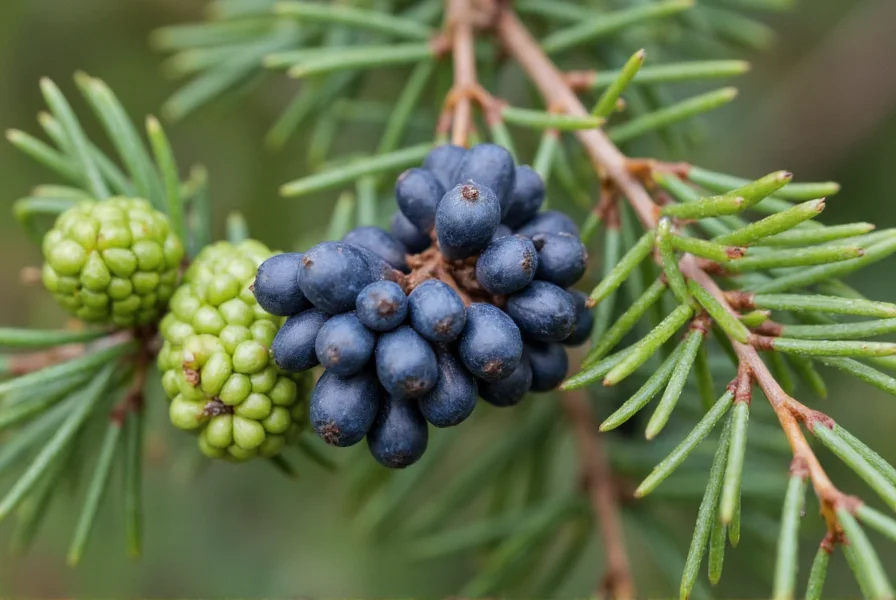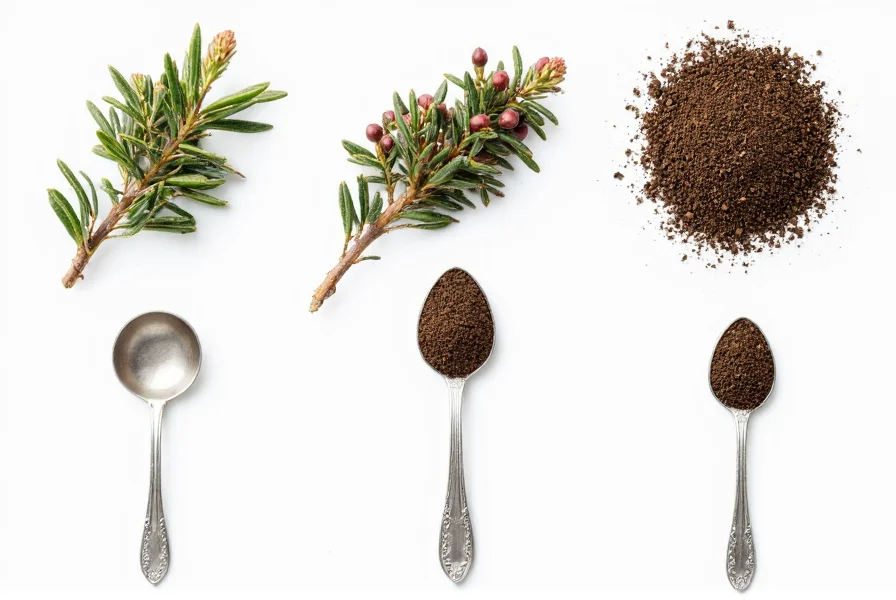Often mistaken for actual berries, juniper "berries" are technically modified cones produced by juniper shrubs. These aromatic botanicals have played a significant role in culinary traditions and folk medicine across Europe and North America for generations. Understanding their proper identification, uses, and safety considerations is essential for anyone interested in incorporating them into cooking or wellness routines.
Botanical Identity and Varieties
Despite their name, juniper berries are not berries at all but rather the female seed cones of juniper plants, which belong to the cypress family (Cupressaceae). The most commonly used species for culinary and medicinal purposes is Juniperus communis, though other varieties exist. These small, fleshy cones typically measure 4-12mm in diameter and change from green to blue-black as they mature over 18-24 months.
Proper identification is crucial as some juniper species produce berries that are unsafe for consumption. Juniperus communis can be identified by its needle-like leaves arranged in whorls of three, with a single white stripe on the upper surface. The plant typically grows as a low shrub in northern climates across Europe, Asia, and North America.

Nutritional Composition
Juniper berries contain a complex array of bioactive compounds that contribute to their distinctive flavor and potential health properties. A comprehensive analysis reveals:
| Nutrient/Compound | Concentration | Significance |
|---|---|---|
| Terpenes (including pinene) | High | Contribute to aromatic properties and potential anti-inflammatory effects |
| Flavonoids | Moderate | Antioxidant properties |
| Vitamin C | Low-Moderate | Supports immune function |
| Juniperin | Trace | Unique compound with potential medicinal properties |
| Tannins | Moderate | Astringent properties |
Culinary Applications of Juniper Berries
Chefs and home cooks have valued juniper berries for their distinctive piney, citrus-like flavor with subtle peppery notes. The traditional uses of juniper berries in European cuisine include:
- Meat preparation - Particularly effective with game meats like venison, wild boar, and rabbit, where they help cut through richness
- Gin production - The primary botanical that gives gin its characteristic flavor
- Sauces and marinades - Adds complexity to meat sauces and marinades
- Bread baking - Incorporated into rye breads in Scandinavian traditions
- Vinegar infusions - Creates aromatic vinegars for salad dressings
When cooking with juniper berries, remember they're potent—use sparingly. Whole berries should be lightly crushed before use to release their oils. For most recipes, 6-8 berries per serving provides adequate flavor without overwhelming bitterness. Never use them raw in large quantities as they can become unpleasantly bitter.
Evidence-Based Health Considerations
While medicinal properties of juniper berries have been documented in traditional medicine systems, modern research provides more nuanced understanding. Scientific studies suggest potential benefits including:
Research published in the Journal of Ethnopharmacology (2021) indicates juniper berry extracts demonstrate significant antioxidant activity, potentially helping combat oxidative stress. Another study in Phytotherapy Research found juniper compounds may support healthy digestion by stimulating gastric enzyme production.
However, it's crucial to understand the limitations. Most research has been conducted in vitro or on animal models, with limited human clinical trials. The health benefits of juniper berries should not be overstated, and they're not a substitute for medical treatment.
Safety Profile and Precautions
Despite their culinary safety, juniper berries contain compounds that warrant caution in certain situations. The primary concern is their potential effect on kidney function due to the compound juniperin.
Who should avoid juniper berries or use them with caution:
- Individuals with kidney disease or compromised kidney function
- Pregnant women (may stimulate uterine contractions)
- People taking diabetes medications (may enhance hypoglycemic effects)
- Those on anticoagulant therapy (potential interaction)
The European Medicines Agency recommends limiting juniper berry consumption to no more than 10g daily for short-term use (up to 4 weeks). Long-term consumption may lead to kidney irritation or other adverse effects. Always consult with a healthcare provider before using juniper berries for medicinal purposes, especially if you have pre-existing health conditions.

Selecting and Storing Quality Juniper Berries
When how to select juniper berries for culinary use, look for plump, deep blue-black berries with a strong aromatic scent. Avoid berries that appear shriveled, moldy, or have a musty smell. For the best flavor, choose berries harvested in the second year of maturation.
Proper storage extends their shelf life significantly:
- Dried berries - Store in airtight container away from light and heat; maintain potency for 1-2 years
- Fresh berries - Refrigerate in perforated container; use within 2 weeks
- Ground berries - Lose potency quickly; best ground fresh as needed
Foraging wild juniper berries requires careful identification to avoid toxic species. If you're uncertain about identification, purchase from reputable spice merchants who source Juniperus communis specifically.
Conclusion
Juniper berries offer a unique flavor profile and potential health benefits when used appropriately. Their distinctive taste has earned them a permanent place in culinary traditions, particularly in Northern European cooking. While research into their medicinal properties of juniper berries continues, current evidence supports moderate culinary use as safe for most people.
As with any botanical, understanding proper identification, appropriate usage amounts, and potential contraindications ensures you can enjoy juniper berries safely. Whether you're using them to enhance a venison stew or exploring their traditional applications, respecting their potency and limitations will yield the best results.










 浙公网安备
33010002000092号
浙公网安备
33010002000092号 浙B2-20120091-4
浙B2-20120091-4